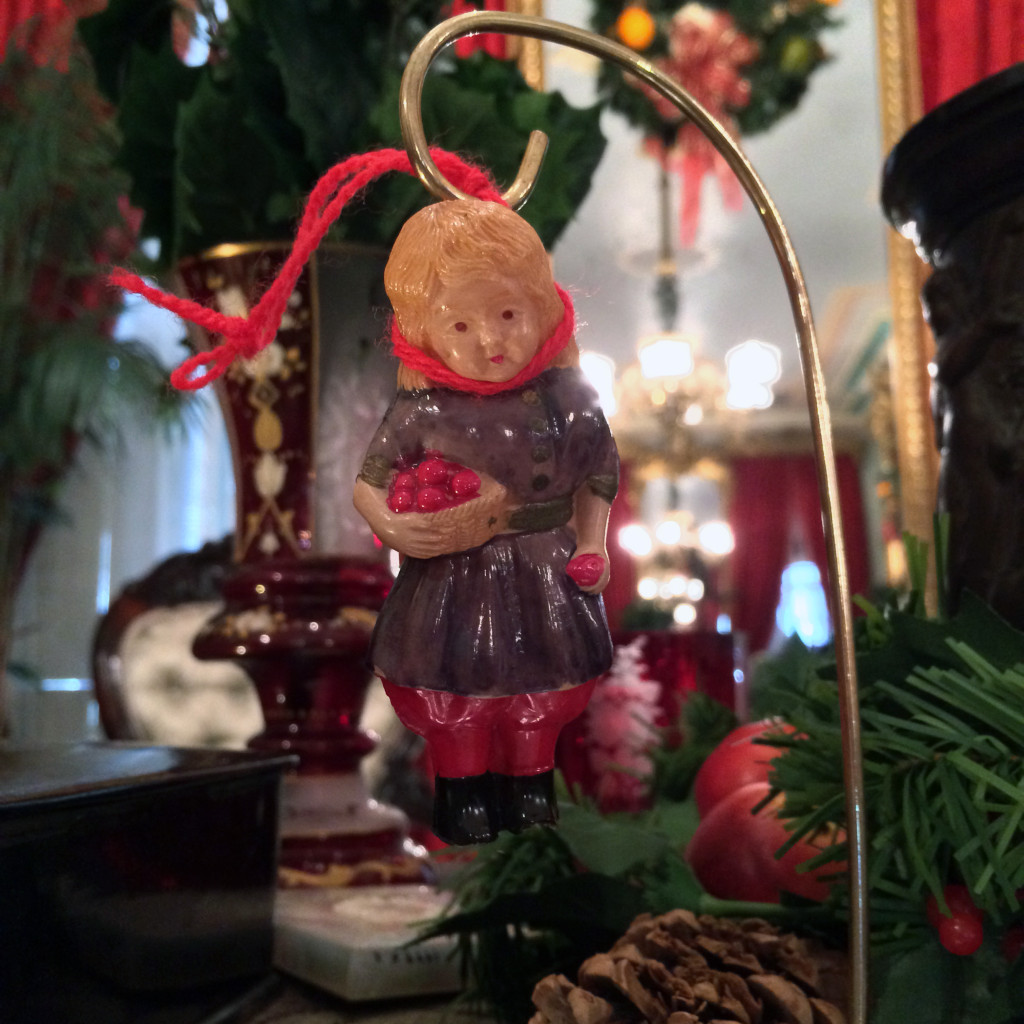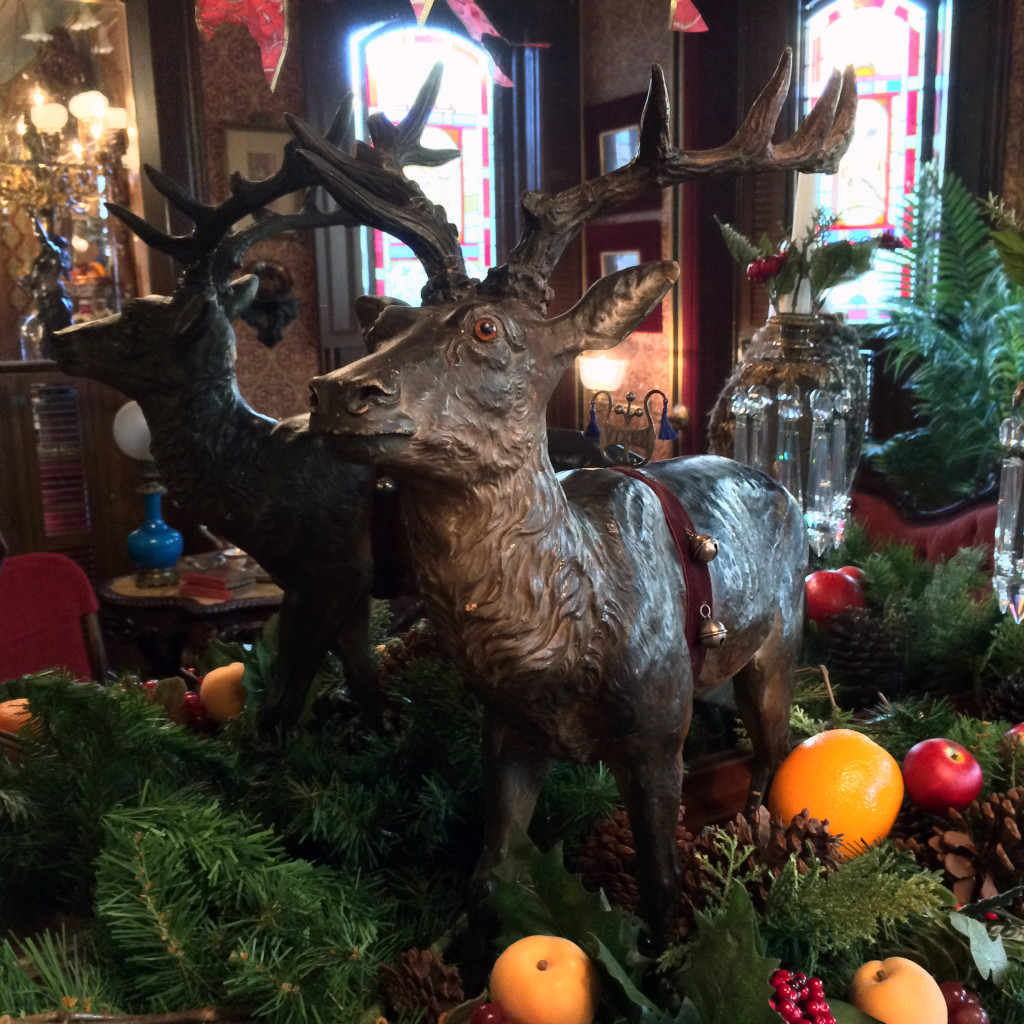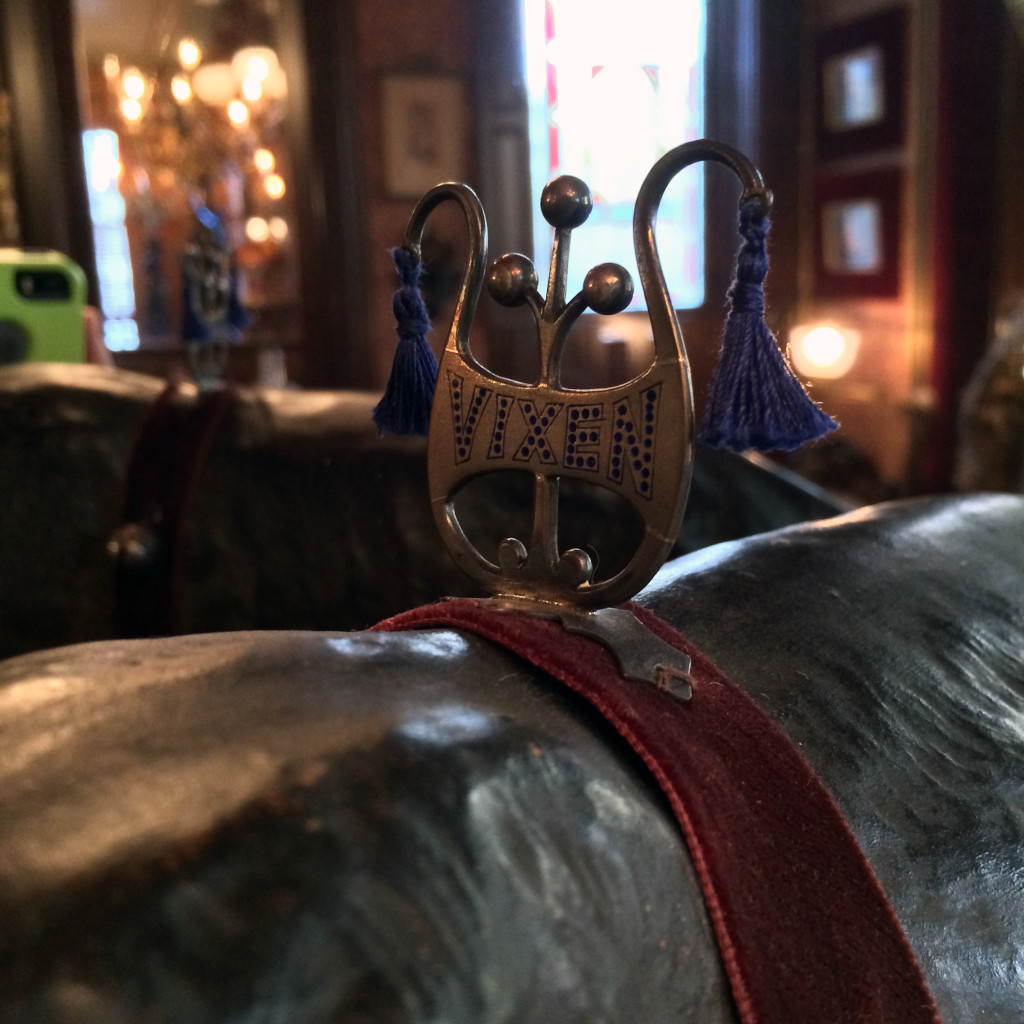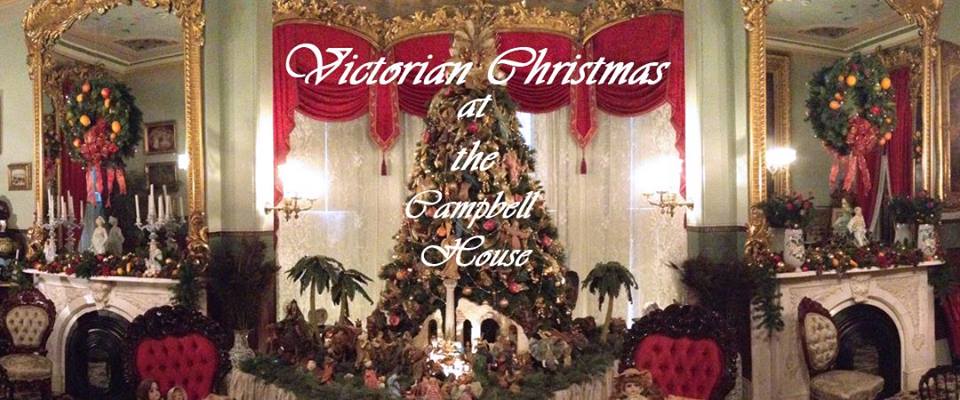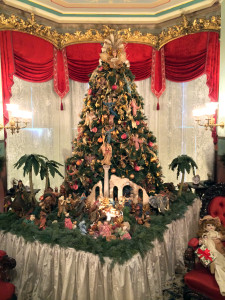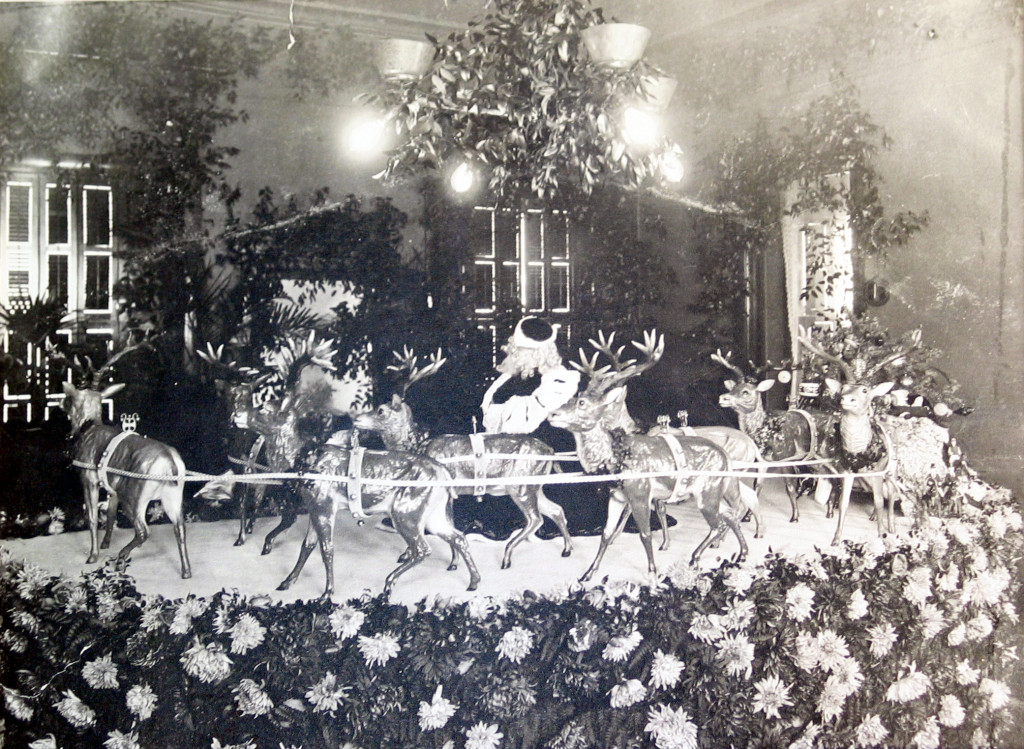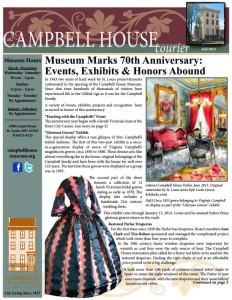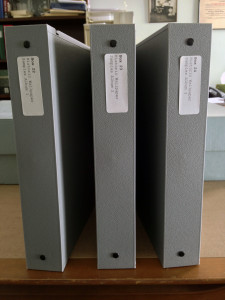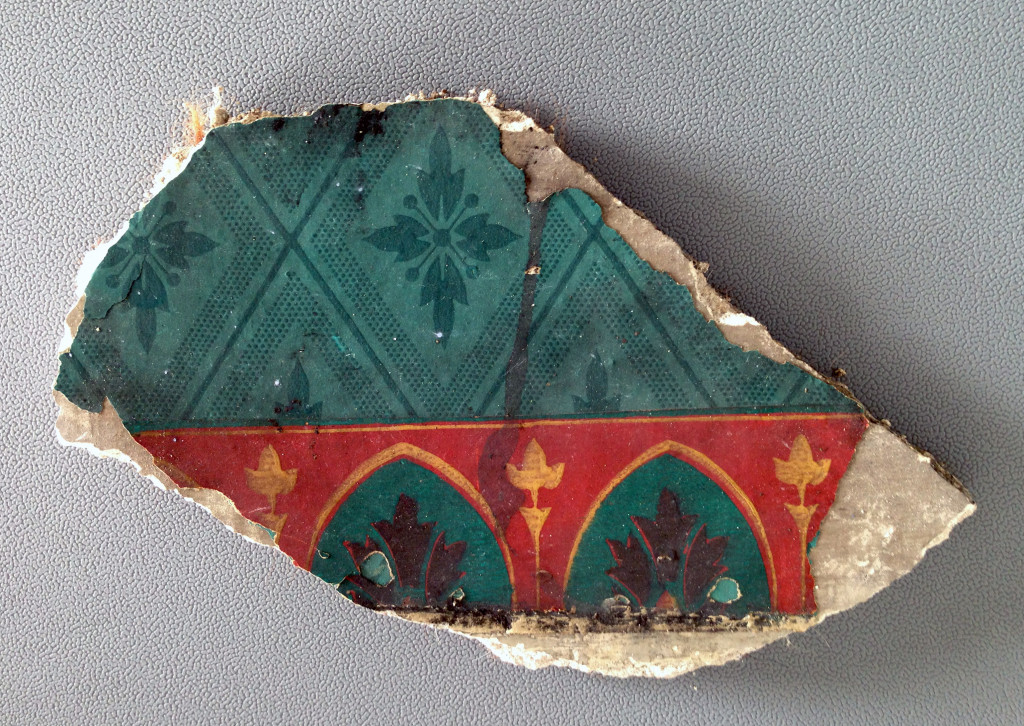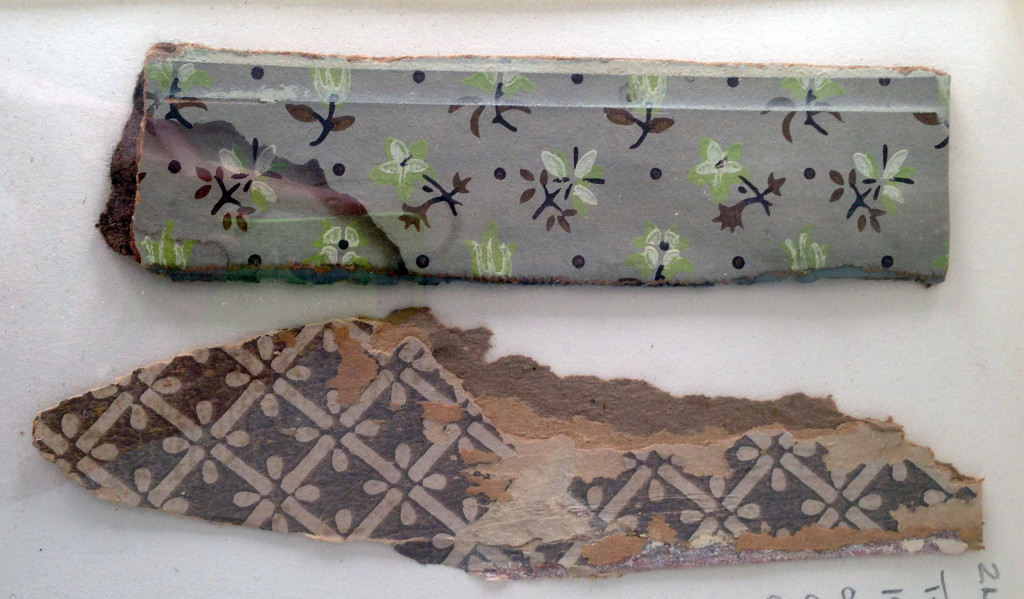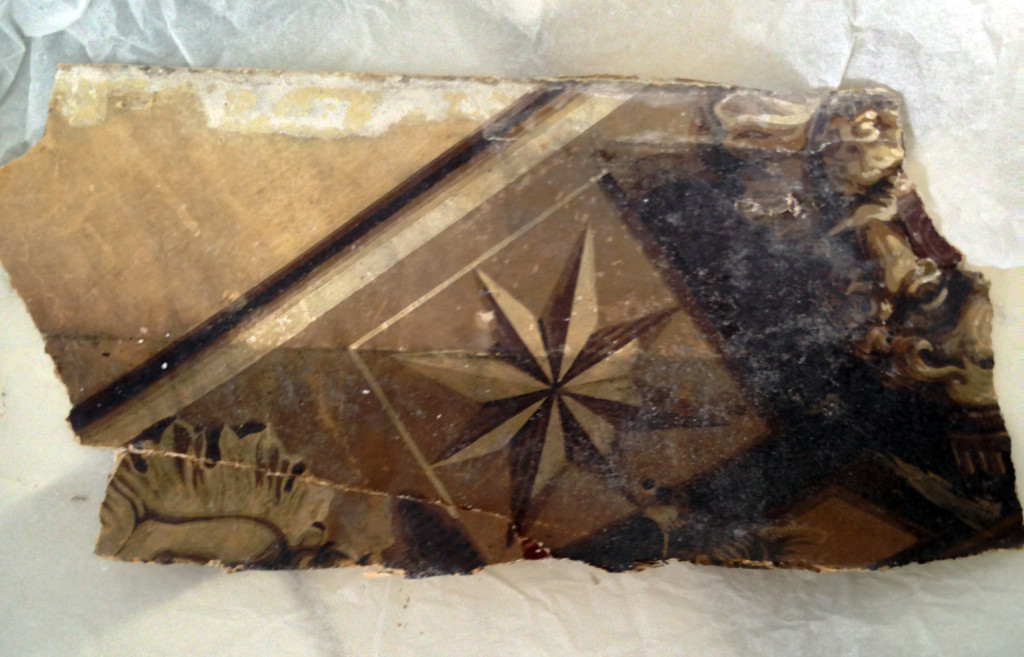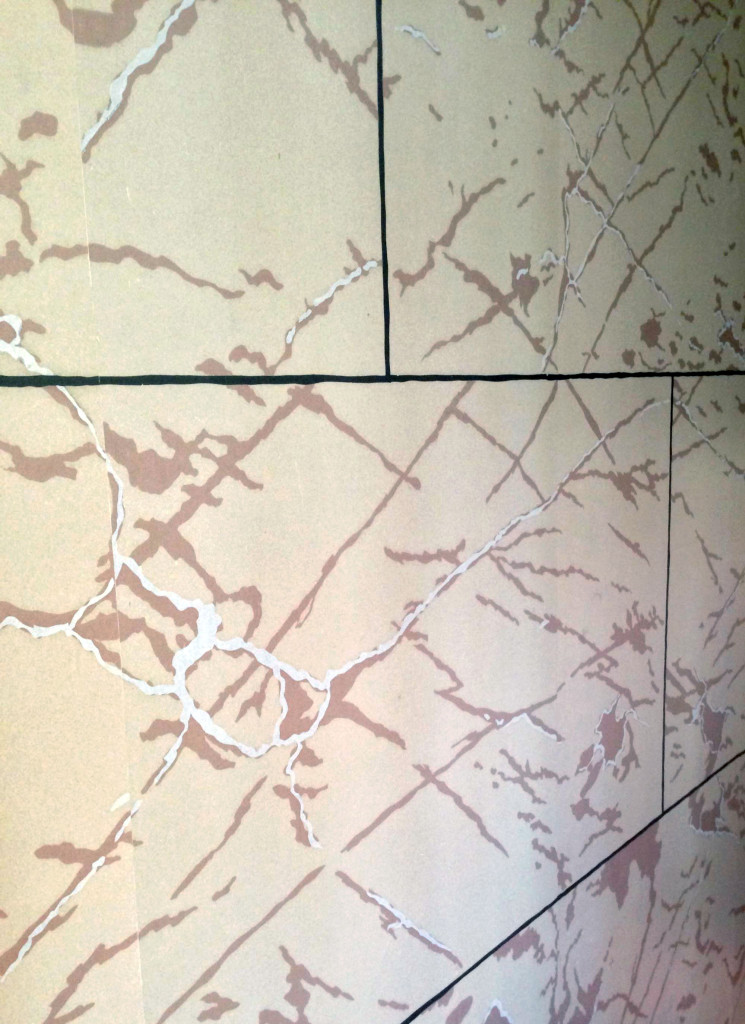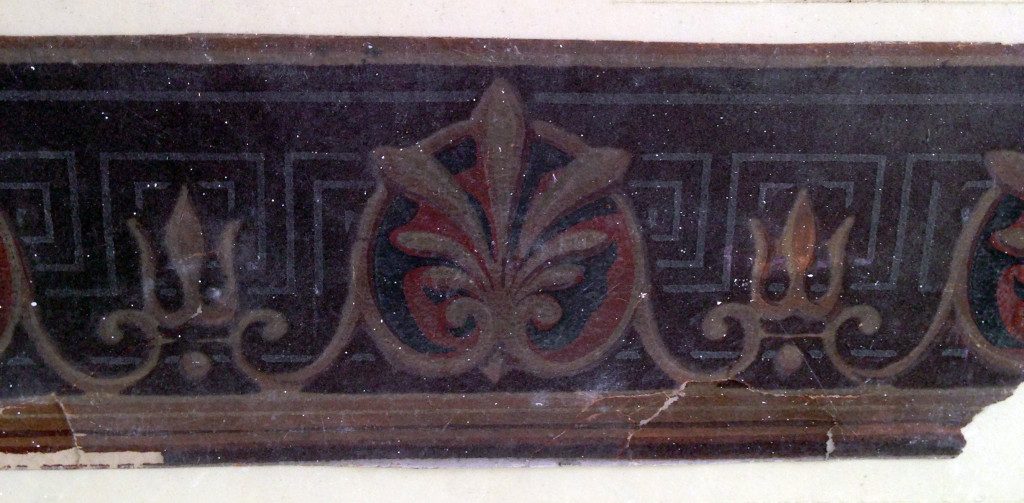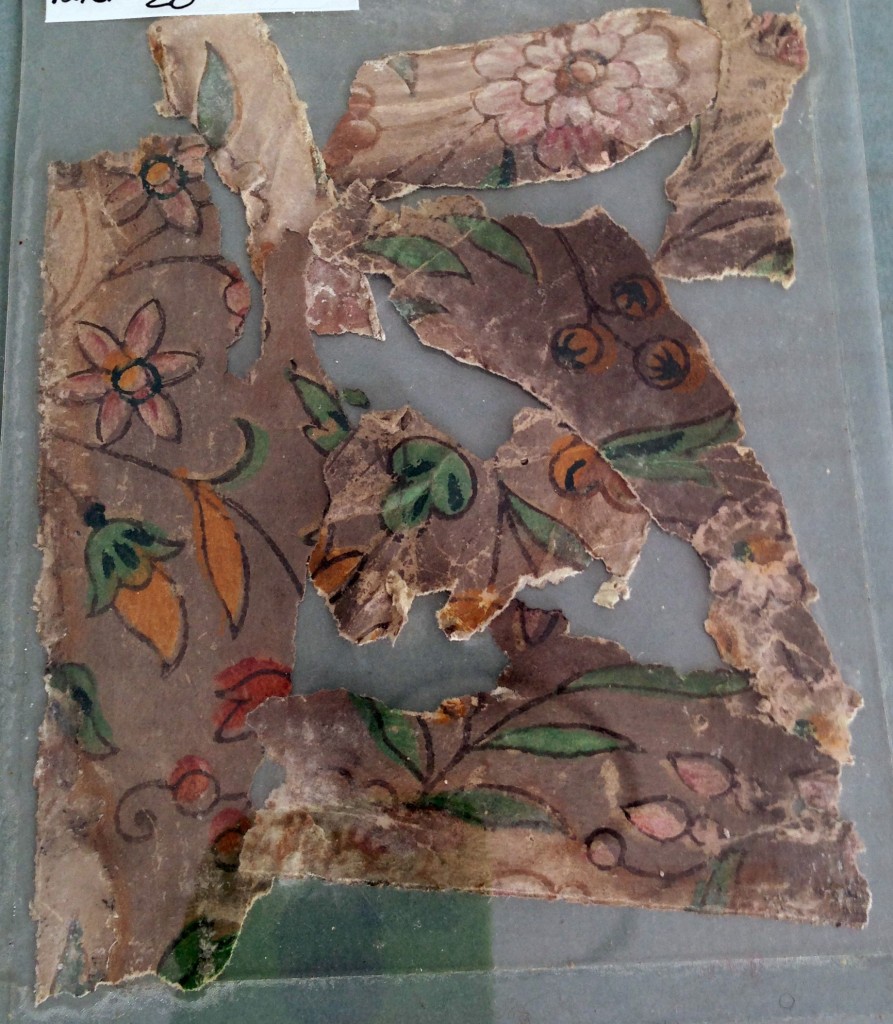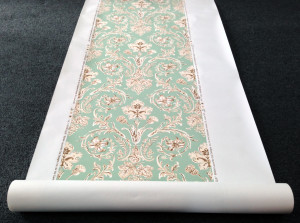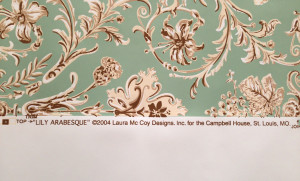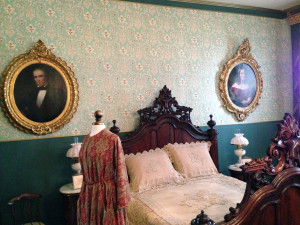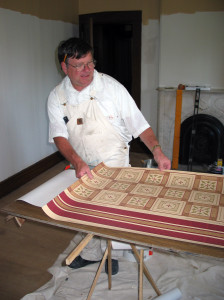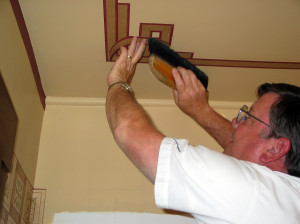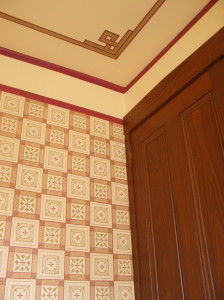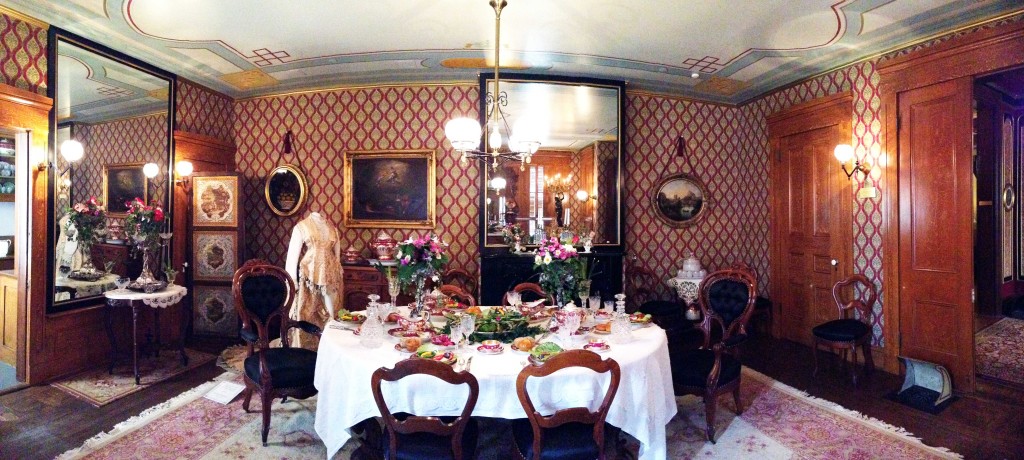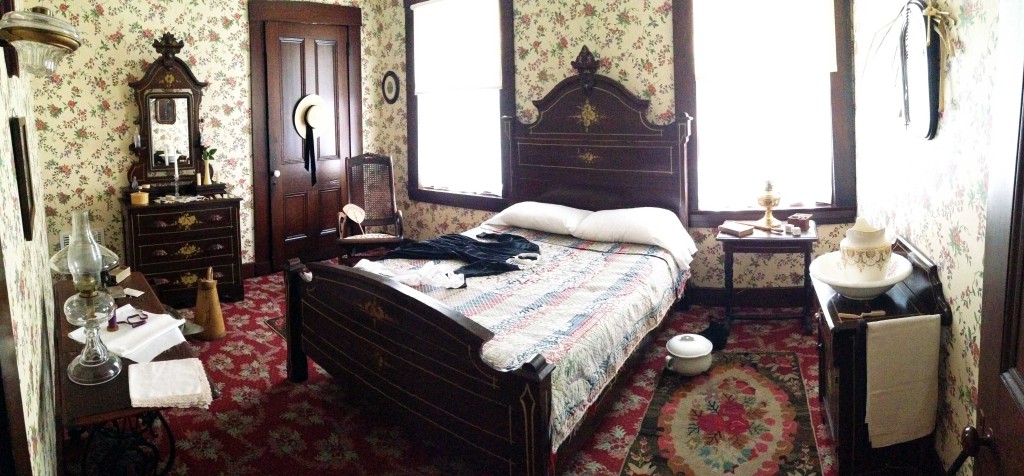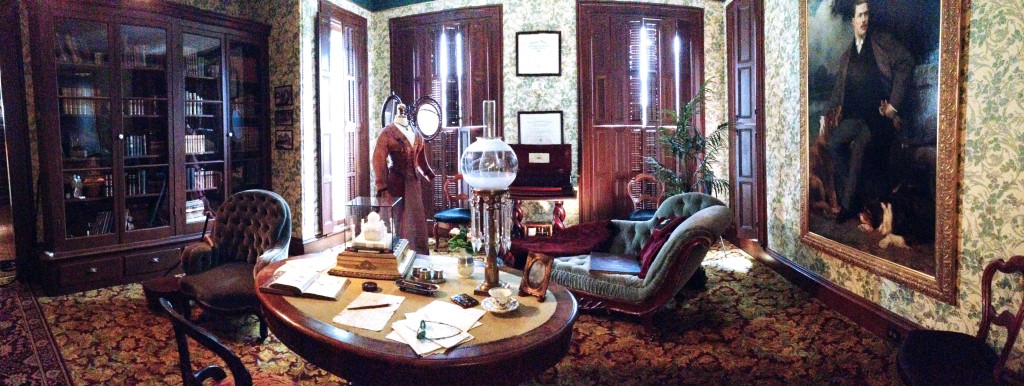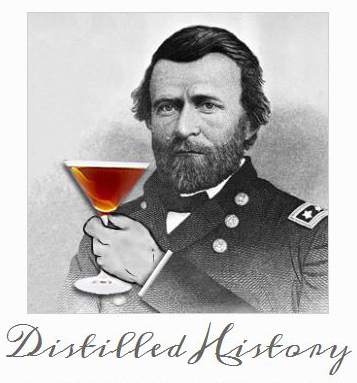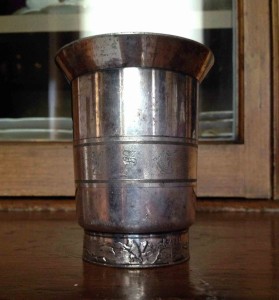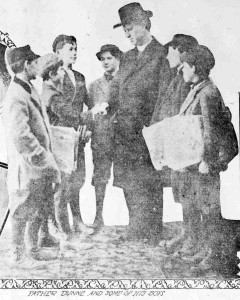
“Father Dunne and some of his boys”
Father Dunne’s Newsboys’ Home and Protectorate, as an organization, will be 108 years old this coming February. Back in 1931, during the 25th anniversary celebration, the St. Louis Globe-Democrat recollected that, “A mysterious ‘Friend of the Home,’ who has never permitted his name to be known, began his ministrations at [at the Home on] Selby Place, sending every now and then a wagonload of provisions and leaving with Father Dunne, gifts of money, always anonymously. In those early days it is probable the home could not have existed but for this friend. Suffice it to say that his interest has never abated. A bountiful Thanksgiving dinner every year since then is one of his outstanding benefactions.” This is the story of who that anonymous benefactor was.
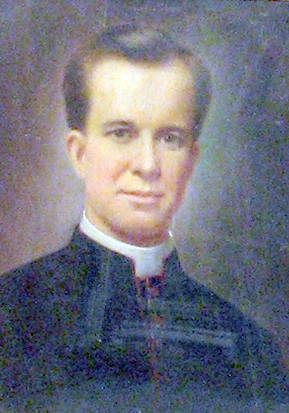
Fr. Peter Joseph Dunne
The future Father Peter Joseph Dunne was born June 29, 1870 in Chicago. His father was a carpenter, but both his parents did not enjoy good health, and the family moved to a small farm in Kansas in 1873 to get away from “the stifling city streets.” Nevertheless, Peter Dunne’s mother died in 1879 and his father took Peter and his four siblings to reside in Kansas City, Missouri, where Peter’s father died three years later. An orphan at the age of 12, Peter was employed in a printery, but later found work at the Catholic Orphans’ Home for Girls in Kansas City where his sisters resided. Working various odd jobs and apprenticeships through age 24, Peter moved to St. Louis in the winter of 1891, where he first was a teamster, then, after panic of 1893, became night watchman at Saint Louis University.

Though poorly educated, the Jesuits put him on the path to priesthood. He spent four years at St. Benedict’s College in Atchison, Kansas, then entered Kenrick Seminary in 1898. At age 32, Peter Joseph Dunne was ordained a priest on June 13, 1903. His first assignment was at St. Columbkille’s Church in Carondelet, then, in May 1905 to St. Rose’s Catholic Church. No doubt always alert to the problems of parentless boys and the need for education, on September 10, 1905 he preached a sermon claiming the education of boys in St. Louis, as in the rest of the nation, was neglected in favor of girls. “Girls are not inclined by nature to be as bad as the boys,” thought Father Dunne. “Boys are not naturally bad, but they must be properly trained.” The St. Louis Republic newspaper reported, “The attack on the system of the instruction of youths as conducted by the Catholic Church is said to be the first public utterance of its kind.”
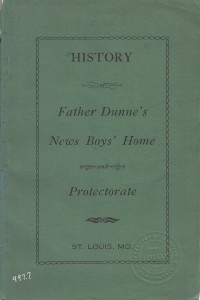 Perhaps in reaction to Father Dunne’s sermon, or perhaps it was already part of the plan, on December 6, 1905, Archbishop John Glennon announced the establishment of a “home for poor boys and girls” in St. Louis, most of whom worked menial jobs, such as selling newspapers or shining shoes, to survive on the streets. He appointed Father P. J. Dunne as director to “devise ways and means for its creation and maintenance.” The home was to be located on Sixteenth or Seventeenth Street, between Washington Avenue and O’Fallon Street (“the congested district east of Jefferson Avenue.”) According to Father Dunne, they would start with the boys: “Newsboys, bootblacks and all homeless boys who are too old to find a shelter at orphanages will be cared for free of charge.” In addition, the home would provide “a refuge for boys who are arrested and taken before the juvenile court.” Father Dunne would solicit funds from local businessmen: “Several prominent St. Louis philanthropists have already signified their willingness to do all within their power to promote the enterprise.”
Perhaps in reaction to Father Dunne’s sermon, or perhaps it was already part of the plan, on December 6, 1905, Archbishop John Glennon announced the establishment of a “home for poor boys and girls” in St. Louis, most of whom worked menial jobs, such as selling newspapers or shining shoes, to survive on the streets. He appointed Father P. J. Dunne as director to “devise ways and means for its creation and maintenance.” The home was to be located on Sixteenth or Seventeenth Street, between Washington Avenue and O’Fallon Street (“the congested district east of Jefferson Avenue.”) According to Father Dunne, they would start with the boys: “Newsboys, bootblacks and all homeless boys who are too old to find a shelter at orphanages will be cared for free of charge.” In addition, the home would provide “a refuge for boys who are arrested and taken before the juvenile court.” Father Dunne would solicit funds from local businessmen: “Several prominent St. Louis philanthropists have already signified their willingness to do all within their power to promote the enterprise.”
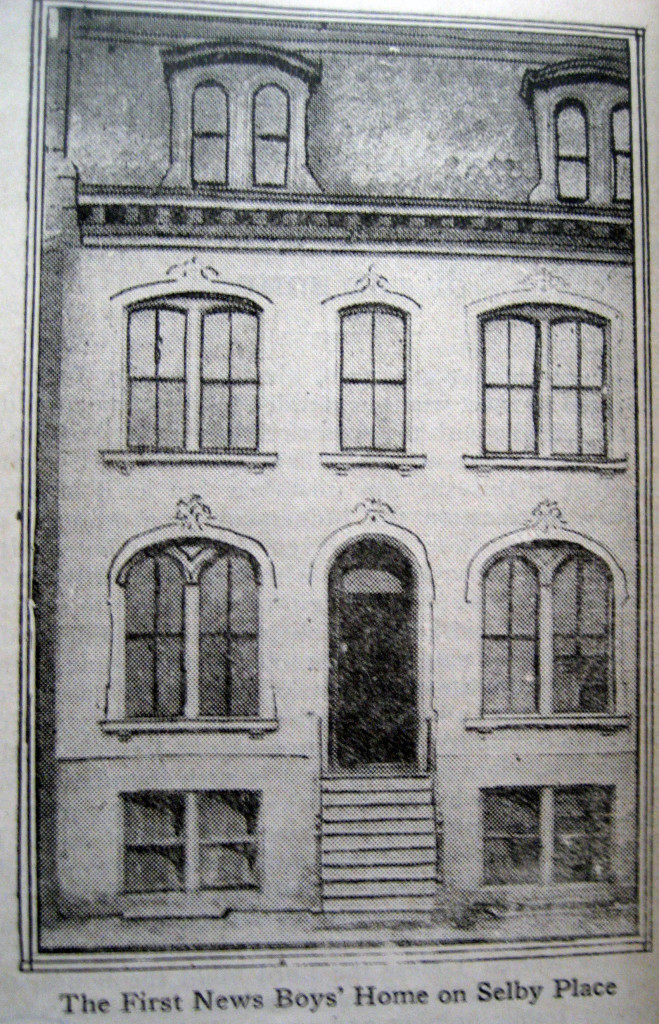 But funds were slow in coming in. In early February 1906 Father Dunnes’ Newsboys’ Home opened at 1013 Selby Place (in north St. Louis, just across from today’s Carr Park). Three boys were the first residents. The first night there was no furniture, but a neighboring merchant loaned him blankets and comforts for the night. Seventeen years later, at the annual Thanksgiving dinner, Father Dunne recalled how several days later “This kind man came to the house and I was not at home. He asked the cook if there was anything to eat in the house for the boys. She told him there was very little – one-half a loaf of bread and two doughnuts. The gentleman went to a wholesale house and sent up a two-horse load of groceries and provisions that lasted us many months.”
But funds were slow in coming in. In early February 1906 Father Dunnes’ Newsboys’ Home opened at 1013 Selby Place (in north St. Louis, just across from today’s Carr Park). Three boys were the first residents. The first night there was no furniture, but a neighboring merchant loaned him blankets and comforts for the night. Seventeen years later, at the annual Thanksgiving dinner, Father Dunne recalled how several days later “This kind man came to the house and I was not at home. He asked the cook if there was anything to eat in the house for the boys. She told him there was very little – one-half a loaf of bread and two doughnuts. The gentleman went to a wholesale house and sent up a two-horse load of groceries and provisions that lasted us many months.”
Per Father Dunne’s recollection, this same “unknown benefactor” would visit the Home as frequently as twice a week to check on things. By May 1906 the number of homeless boys had increased to 35. With the help of friends, including the anonymous gift-giver, Father Dunne rented a larger house at 2737 Locust Street. It was here that the newsboys’
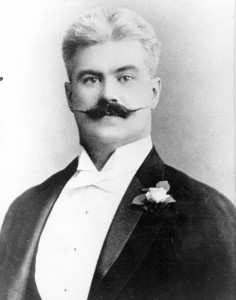
“That Feller”, Mr. Hugh Campbell
celebrated their first Thanksgiving. The St. Louis Republic headline read “Prince of Mystery Stuffs Newsboys,” and described “that feller” – as the newsboys referred to the donor – as a “distinguished-looking, handsome and a thorough aristocrat in his bearing” who watched as the 56 residents ate turkey, dressing, rolls, fruit, nuts, pie, cake, and ice cream, all served by waiters “who looked as if they might have stepped out of the Arabian Nights.” At each boy’s plate were a dollar bill, a box of Busy Bee candy, and a toy turkey. The anonymous benefactor would go on to spend approximately $1,000 every Thanksgiving for the next 25 years to provide a similar feast. It was only after the donor’s death in 1931 that Father Dunne officially identified the sponsor as Hugh Campbell, Jr., the millionaire son of Robert Campbell.
Banquets occurred year after year, seemingly growing in excess (and certainly in the number of resident boys) over time. On November 10, 1907, just before the occasion of the second Thanksgiving banquet, Father Dunne’s Newsboys’ Home and Protectorate moved to brand new and even larger quarters at 3010 Washington Avenue, at the corner of Washington & Garrison avenues. This was the result of donations from 30 local businessmen, with Hugh 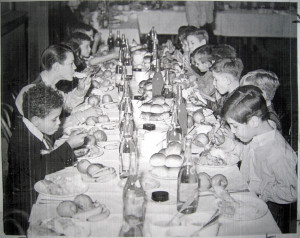 Campbell allegedly providing the bulk of the funds. The Home could now provide for at least 125 boys, and more over time. By 1909, news reports recorded not only the sumptuous feast (always catered), but accompanied by a stringed orchestra (most often De Martini’s), that would entertain the boys with patriotic American or lively Irish music. Each meal began with a prayer of thanks for the unknown benefactor, who seemed to attend in the early years, but less frequently as the years passed. At its’ height, the Thanksgiving banquet provided no less than 600 pounds of turkey to feed upwards of 200 boys.
Campbell allegedly providing the bulk of the funds. The Home could now provide for at least 125 boys, and more over time. By 1909, news reports recorded not only the sumptuous feast (always catered), but accompanied by a stringed orchestra (most often De Martini’s), that would entertain the boys with patriotic American or lively Irish music. Each meal began with a prayer of thanks for the unknown benefactor, who seemed to attend in the early years, but less frequently as the years passed. At its’ height, the Thanksgiving banquet provided no less than 600 pounds of turkey to feed upwards of 200 boys.
 The newsboys referred to the stranger who provided the dinners as “that feller” or “Mr. Murphy.” Hugh Campbell reportedly told Father Dunne that his donations were to remain anonymous, and if his name ever got out, the Newsboys’ Home “would never get another nickel.” He also told the priest, “You had better take what you can while I’m living because my will is made and you will get nothing when I die.” It was only after his death on August 9, 1931 that the extent of his generosity to the Newsboys’ Home was made known.
The newsboys referred to the stranger who provided the dinners as “that feller” or “Mr. Murphy.” Hugh Campbell reportedly told Father Dunne that his donations were to remain anonymous, and if his name ever got out, the Newsboys’ Home “would never get another nickel.” He also told the priest, “You had better take what you can while I’m living because my will is made and you will get nothing when I die.” It was only after his death on August 9, 1931 that the extent of his generosity to the Newsboys’ Home was made known.
During one of the Campbell estate lawsuits, in 1933, Father Dunne testified that Hugh Campbell first came to the Selby Place residence in 1906 after reading about the new home in the newspaper. We know now that Hugh has always had an interest in these types of charitable organizations, having donated to the creation of a “Street Boys’ Home” in St. Louis in 1877. Hugh also gave Father Dunne money, in addition to the cart full of food, and continued to provide for the home and specific boy’s in particular through the years. Besides the Thanksgiving banquets, starting in 1906, Hugh donated the money for construction of the Washington Avenue building in 1907. In 1908 he donated portraits to the Home of Father Dunne, Cardinal Glennon, and the “original newsboy” Jimmy Fleming, in addition to funds for the marble altar in the chapel. In 1909 he provided the money for the facility swimming pool. Hugh also sent several of the boys through the Ranken School of Mechanical Trades, bought one boy an artificial leg, sent “fruit enough for six months” with the Thanksgiving day dinners, and furnished the Home’s 75 piece band with uniforms.
After Hugh’s death another “unknown benefactor” provided the Thanksgiving meal in 1931. The banquets continued in the ensuing years, but news reports never again emphasized the extravagance of the feast. Father Dunne died in March 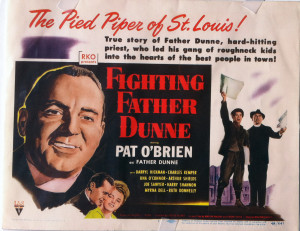 1939. In 1948, RKO pictures released a movie “Fighting Father Dunne” starring Pat O’Brien as Father Dunne, a fictionalized low budget response to 1938’s MGM production of “Boy’s Town.” This despite the fact that Father Dunne’s Newsboys Home and Protectorate had preceded Father Flanagan’s original home for homeless boys by 10 years and Boys’ Town by 14.
1939. In 1948, RKO pictures released a movie “Fighting Father Dunne” starring Pat O’Brien as Father Dunne, a fictionalized low budget response to 1938’s MGM production of “Boy’s Town.” This despite the fact that Father Dunne’s Newsboys Home and Protectorate had preceded Father Flanagan’s original home for homeless boys by 10 years and Boys’ Town by 14.

Father Dunne and boys with newly designed building at 3010 Washington Avenue
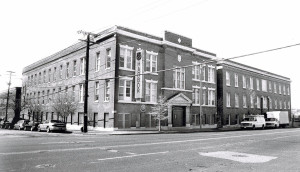
Former Dunne’s Newsboys’ Home building at 3010 Washington Avenue in the current day
The Newsboys’ Home and Protectorate continued through the years. It remained at 3010 Washington Avenue, but in 1947 was reorganized and placed under the Catholic Charities department of children. In 1956 the home celebrated its 50th anniversary at the Washington Avenue location. In July 1970 the building at 3010 Washington Ave was sold to the Salvation Army and Father Dunne’s Newsboys’ Home moved to 4253 Clarence Ave (the building at 3010 Washington Avenue still stands today and was vacated in May 2013 by the Salvation Army). The concept of the homeless newsboys had changed over time, and services were provided for troubled and emotionally disturbed youth. In 1988, the Newsboys’ Home moved to 853 Dunn Rd (on the campus of the former Aquinas High School). In 2006, “Father Dunne’s Old Newsboys’ Home,” a Catholic Charities’ agency providing residential services for boys in foster care, ages 12–21, was one of five agencies that merged to form Good Shepherd Children & Family Services.
**Special thanks to CHM Senior Research Tom Gronski for guest-writing this blog post.
 You see, though we would like to say that all of the beautiful ornamentation, luscious greenery, and Victorian frills found throughout the building is spot-on original as well… it’s not. In fact, we only have TWO original Campbell Christmas pieces in our collection. That’s not two sets of decorations or two boxes… it’s two. And there’s a pretty easy explanation for why this is.
You see, though we would like to say that all of the beautiful ornamentation, luscious greenery, and Victorian frills found throughout the building is spot-on original as well… it’s not. In fact, we only have TWO original Campbell Christmas pieces in our collection. That’s not two sets of decorations or two boxes… it’s two. And there’s a pretty easy explanation for why this is.